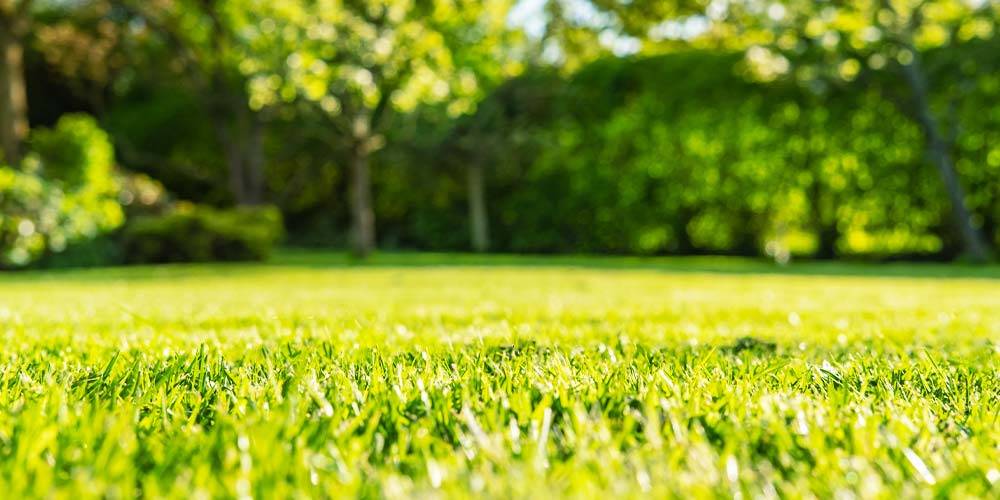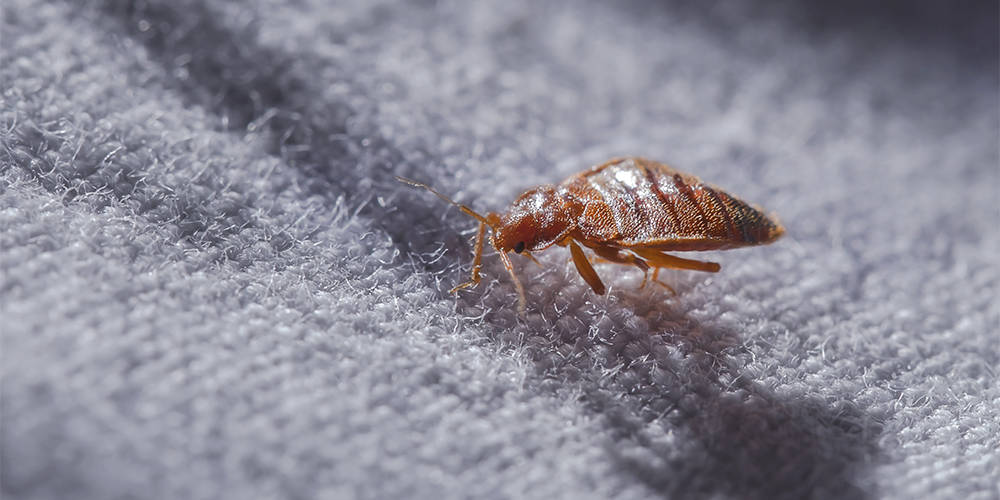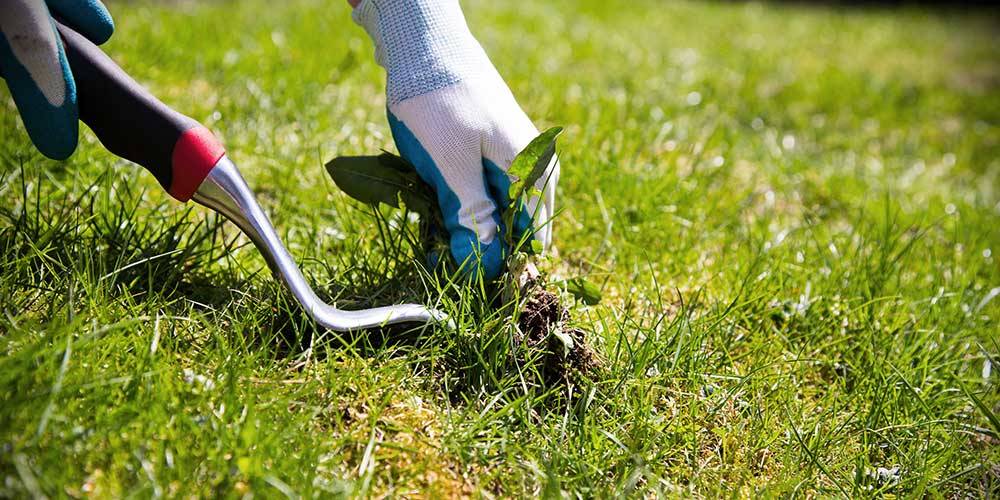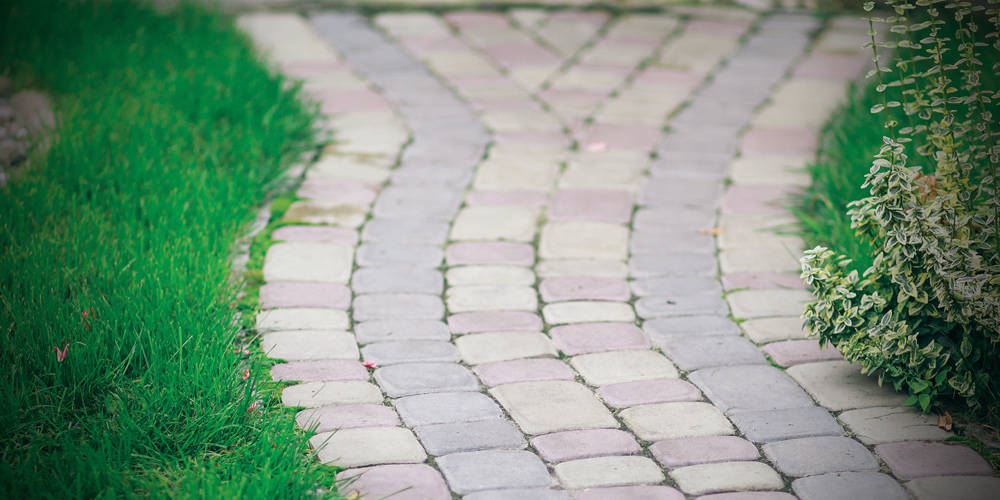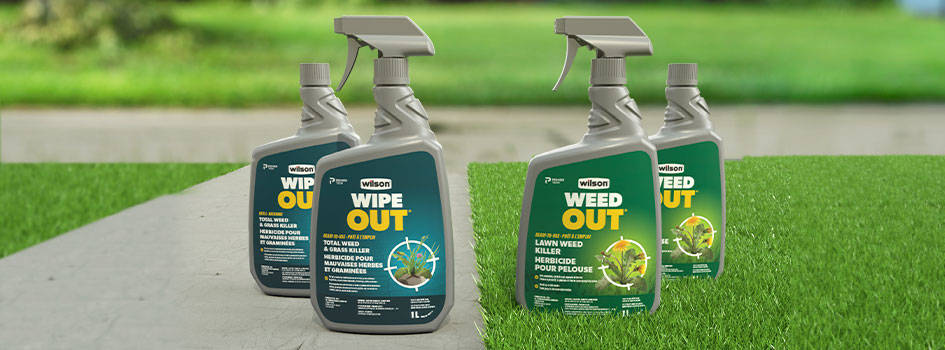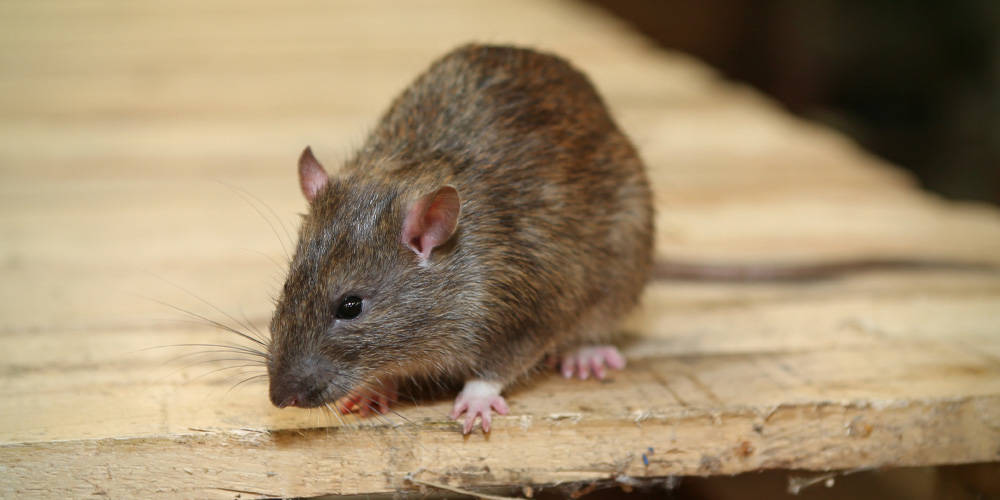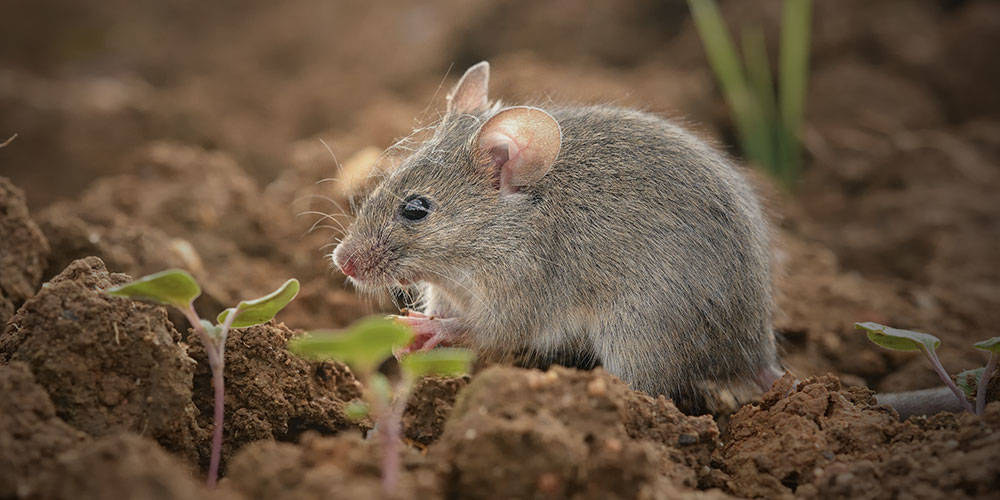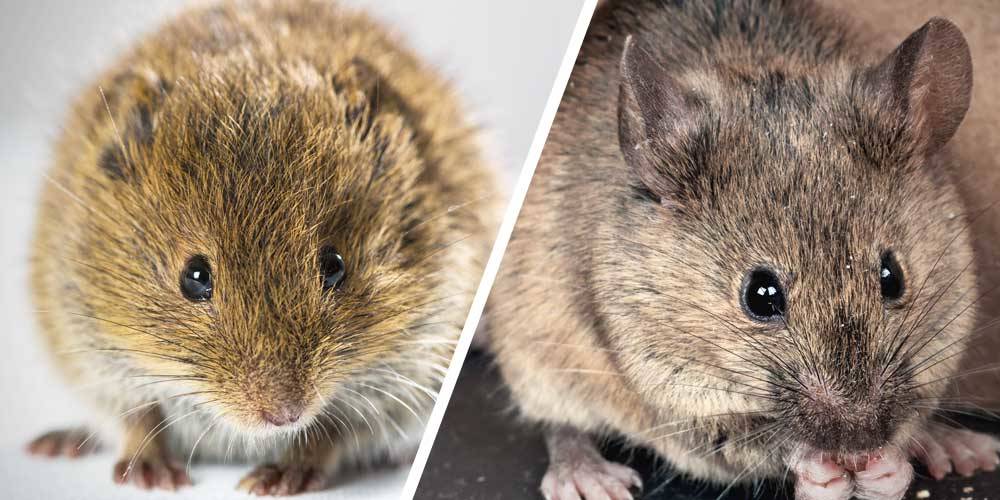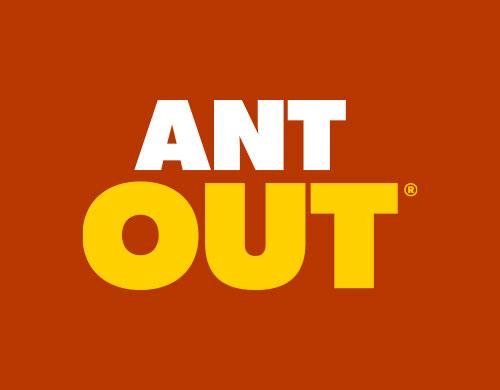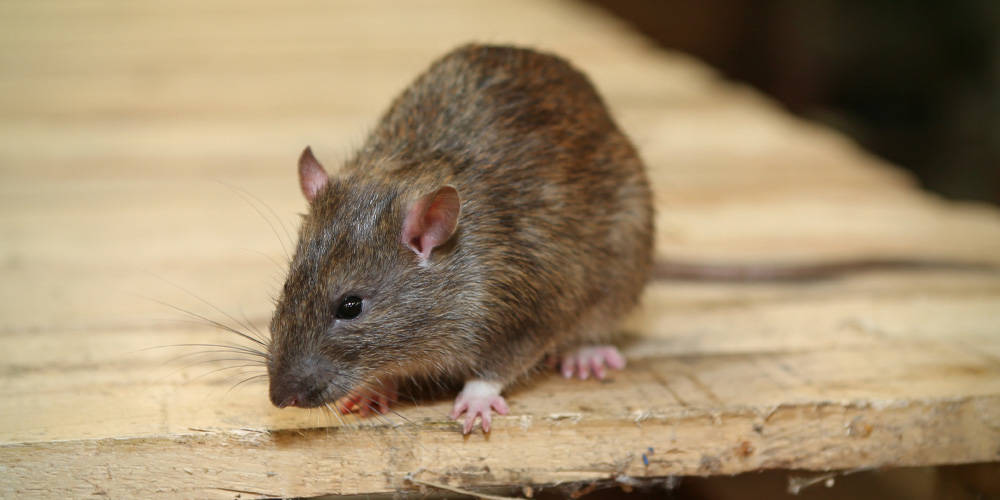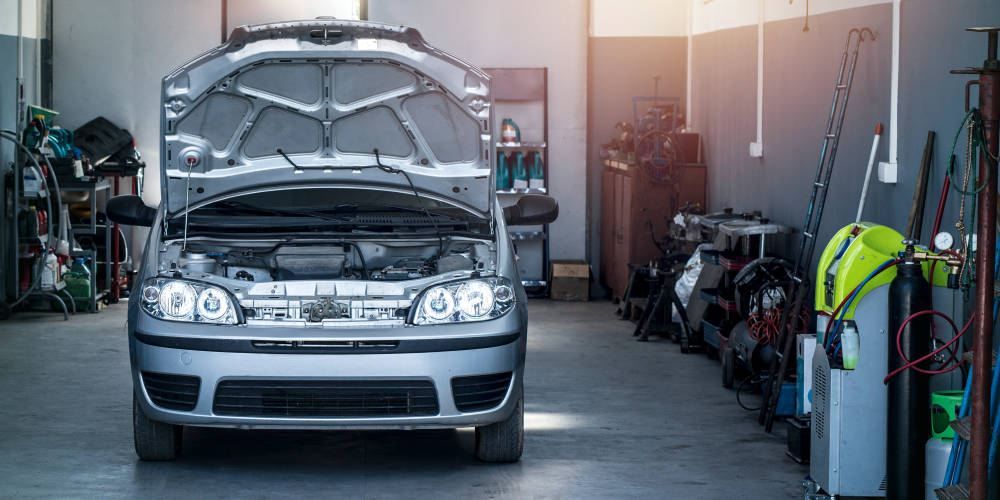

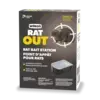
Wilson® RAT OUT™
Rat Bait Station
Former name: Wilson® PREDATOR® Rat Bait Station
You see signs of a rat infestation in your home. It could be serious and you know some of these rats can grow quite big. That means you have to go big in return. Get RAT OUT Rat Bait Stations. They contain 113 g of bait that includes a powerful anticoagulant that is effective in just a couple of feedings. It is also effective against rats that have been exposed to and become resistant to warfarin. The traps are easy to use and make it simple to dispose of dead rodents or dead rodents and traps together. So go big and tell rats to go home.
Easy to use
Easy to use
Contains powerful anticoagulant that kills rats quickly
Contains powerful anticoagulant that kills rats quickly
Dead rodents and traps with dead rodents are easy to dispose of
Dead rodents and traps with dead rodents are easy to dispose of
No need to touch dead rodents
No need to touch dead rodents
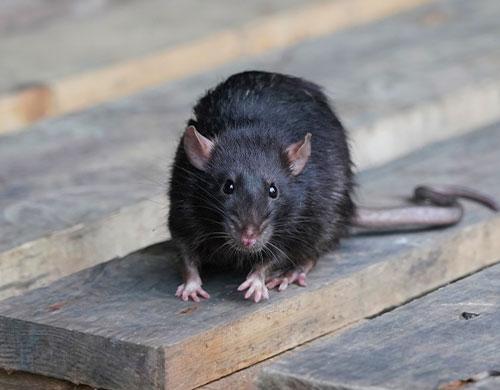
Rats
Rats
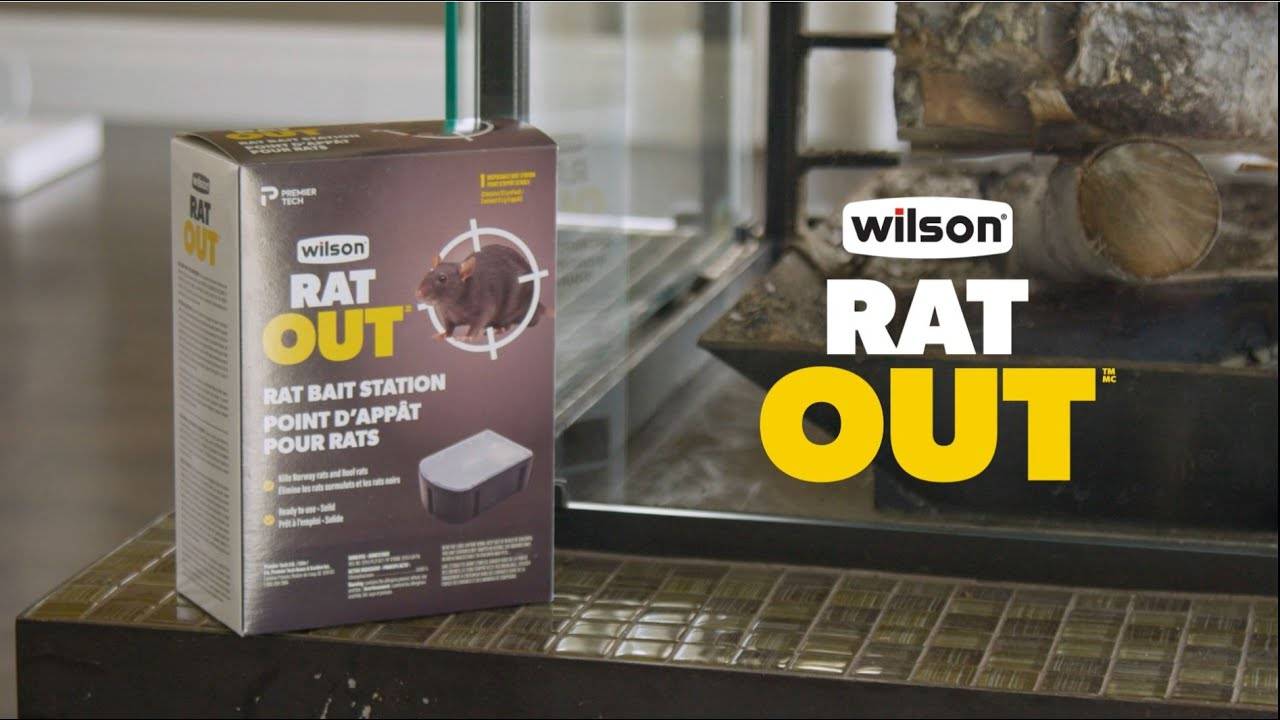
Step 1
Remove bait station from package and place in horizontal position with side against wall, exposing entrance. Place 1 to 5 bait stations (at intervals of 5-10 m) within the treatment area.
Step 2
Maintain an uninterrupted supply of fresh bait for at least 10 days, or until signs of rat activity cease. Replace bait stations if contents are consumed or contaminated.
Step 3
Wearing rubber gloves, collect and dispose of all dead rodents and unconsumed bati appropriately.
Step 4
To prevent reinfestation, eliminate food, water and harbourage as much as possible. If reinfestation occurs, repeat treatment. Where a continuous source of infestation is present, establish permanent bait stations as necessary.
Tips
- Place traps in locations rats travel and will most likely find and consume the bait. For example, place along walls, by gnawed openings, in corners and concealed places, between floors or walls, or in locations where rats or their signs have been seen.
- Remove as many alternative sources of food as possible.
Warnings
- Contains peanut, wheat, soy and fish allergens
- Keep out of reach of children, pets and livestock.
- May be harmful or fatal if swallowed or absorbed through the skin.
- Wash hands before eating, drinking, chewing gum, using tobacco or using the toilet.
- Wash contaminated clothing, separately from other laundry, with soap and hot water before reusing.
- Wrap used or damaged bait stations and discard in household garbage.
- Do not use damaged bait station.
- Dead rodents should be securely wrapped and placed in closed containers and disposed of in the garbage.
- Otherwise, securely wrap carcasses and bury to a depth that will make them inaccessible to scavengers
- Store in a cool, dry place away from other chemicals and food or feed.
- Store product not in use in original container, in a secure location inaccessible to children and non-target animals.
For additional product information or in case of emergency, spills or fire, call toll-free 1-800-268-2608.
General precautions
- Keep out of reach of children.
- Wash thoroughly after handling and before smoking or eating.
- Environmental: toxic to aquatic organisms, birds, bees and beneficial insects.
Hazards to humans
Can cause irritation to eyes. Can be harmful if ingested.
If on skin or clothing
Take off contaminated clothing. Rinse skin immediately with plenty of water for 15-20 minutes.
If in eyes
Hold eye open and rinse slowly and gently with water for 15-20 minutes. Remove contact lenses if present after the first 5 minutes, then continue rinsing eye.
If swallowed
Have person sip a glass of water if able to swallow. Do not induce vomiting unless told to by a poison control centre or doctor. Take container, label or product name and P.C.P. Registration Number with you when seeking medical attention.
If inhaled
Move person to fresh air. If person is not breathing, call 911 or an ambulance, then give artificial respiration, preferably mouth-to mouth, if possible.
In every case, call a poison control centre or doctor for treatment advice.
Toxicological information
Vitamin K1 in the form of intramuscular or subcutaneous injections, or by oral ingestion is a suggested remedial treatment for anticoagulant poisoning. The severity of the case measured by establishing prolonged prothrombin times (P.T.) will determine appropriate therapy. Monitoring P.T. will indicate the necessity of repeated treatments.
Chlorophacinone 0.005%
Frequently asked questions about Wilson RAT OUT Rat Bait Station
RAT OUT Mouse Bait Stations are effective in enticing rats. The rats are less suspicious of the stations because they prefer enclosed spaces. Inside the station, the rat will find a block bait loaded with attractive foods and rat poison. The poison is tasteless and completely camouflaged by the sweet attractants. Once bait stations are placed along walls where there has been rodent activity, you need to monitor bait consumption through the clear lid. The rats will return several times, and eventually die after a few feedings.
RAT OUT Bait Station is resistant to tampering by children. They can’t open it, nor can their little hands reach the bait block. This bait station can be used in indoor areas accessible to children. That being said, large pets, such as dogs, could break the station with their teeth. Do not use this product in areas accessible to pets.
Remove bait station from package and place in horizontal position with side against wall, exposing entrance. Place two (2) bait stations every 2 to 4 m within the treatment area. Four (4) bait stations per location may be necessary at points of very high rat activity. If a bait station is not disturbed after several days, move it approximately 1 metre.
Maintain an uninterrupted supply of fresh bait for at least 15 days or until signs of rat activity cease. If bait runs out, replace the bait station with another station. If reinfestation occurs, repeat treatment. Where a continuous source of infestation is present, establish permanent bait stations as necessary.
For indoor use only in suspended ceilings, lofts, attics, kitchens, food preparation areas, closets, garages, outbuildings, under floorboards and in wall cavities.
Always put bait stations in areas where there is a lot of rat activity. If you see rat droppings, this is a sign that bait stations should be placed in that room. Place stations along the walls and edges of your room. Rats aren’t likely to go through the centre of the room unless they are being chased. Instead, they tend to scurry along the edges of your room. Put traps along the walls near entry points like doors and windows. Place bait stations at 2 to 5 metre intervals, using the smaller interval in locations where there is a high level of rat activity observed. Place a shallow container of drinking water near bait stations to encourage consumption of bait.
Move your stations to different areas if nothing has been caught within a few days of putting them in place. Sometimes you have to experiment with placement to figure out what will work inside your home. It is essential to get as many rats to take the bait as possible in order to rid your home of an infestation quickly. RAT OUT Bait Stations can also be used as a preventative option, in areas in your garage, basement or attic year-round so you don’t end up with an infestation.
An uninterrupted supply of bait should be maintained for at least 15 days. Monitor bait through a clear lid in the bait station.
Many people realize they have a rat problem when the rats have already entered and can be heard in an attic or scratching inside walls. At times, rats are first discovered when electrical wiring or pipes are chewed and damaged. It can also be quite alarming to walk into a kitchen or pantry and find your food storage has been raided by rats.
If you suspect you may have rats but have not seen one, you may notice other signs like brown smudges on walls or other items caused by rat grease as they rub these surfaces. Often the first sign is the presence of rat droppings in pantries, cabinets and other places in the home.
These are two different methods of controlling rats. RAT OUT Bait Station poisons them and is slower in controlling rats, in that it may take 3-7 days before they die. The advantage is that multiple rats can keep feeding and returning to the same bait station, which allows for a broader control. RAT OUT Mouse Traps (Smart Trap) attract mice and when tripped, kills one mouse at a time immediately.
Haven't found the answer to your question?
We are here to help you!
Similar products
To help you kill rats

RAT OUT
Fast-Set Rat Trap
Stop rats in their tracks with the Fast Set Rat Trap by Wilson Control. Solve your rodent problem quickly and efficiently with completely touch-free disposal.
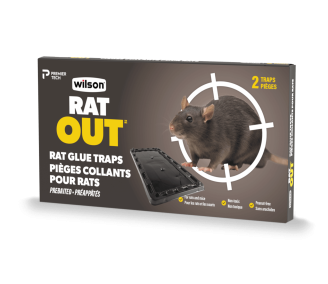
RAT OUT
Rat Glue Traps
Eliminate your rat problem efficiently and humanely with Wilson Control's glue traps. These are the next generation of rat traps, both reliable and easy to use.
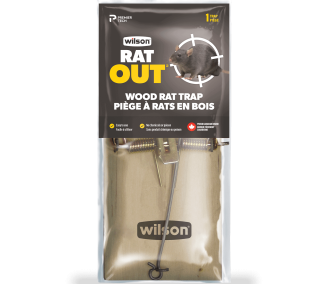
RAT OUT
Wood Rat Trap
Top quality hardwood trap that kills rats quickly without using poison or chemicals. Easy disposal of dead rodent.
